Santiago de Compostela is an international tourist destination thanks to the Camino de Santiago (before the pandemic, in 2019 almost 350,000 pilgrims arrived). But, thanks to its historic center, its World Heritage buildings and its religious and civil buildings with centuries behind it, it is also an impressive destination for other tourists. If at the time we told you our recommendations for the best things to see in Santiago de Compostela in one day, what we bring you today is our selection of what to see in Santiago de Compostela in two days.
1.- The Hostel (and Hospital) of the Catholic Monarchs
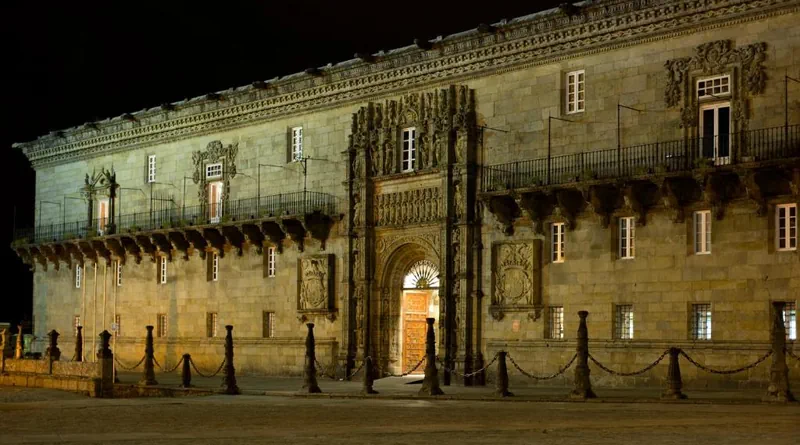
The Parador de Santiago de Compostela is considered the oldest hotel in Spain, since it was born as accommodation for pilgrims by order of the Catholic Monarchs. Its function was simultaneous to that of Hospital, since many pilgrims arrived exhausted or sick, as a result of the travel conditions at the time.
The building is one of the most important examples of the Spanish Plateresque style, of which its façade has been preserved, with four cloisters inside, a Royal Chapel (where the Galician poet Rosalía de Castro was baptized), elegant corridors and corridors and, due to its position, rooms of the corresponding level.
Although the common areas are freely accessible, the courtyards and the Royal Chapel have restricted access hours and admission (€3). It is comparatively more interesting to hire the guided tour of the Hostal de los Reyes Católicos, which lasts one hour and includes admission to some additional spaces.
2.- The Gelmírez Palace

The Gelmírez Palace (Pazo de Xelmírez in Galician) goes unnoticed due to its Romanesque sobriety on the façade and floor plan and its own location on a corner of Plaza del Obradoiro and attached to the Cathedral of Santiago de Compostela.
Its imposing plan, more typical of a fortified palace than a residential palace, is the work of Diego Gelmírez, the first Archbishop of Santiago, its first resident, and a great promoter of the works of the Cathedral. Today it is part of the Cathedral Museum, with permanent and temporary exhibitions. As a note of interest, it is from here where the interesting guided tours of the Cathedral Roofs depart.
3.- The Pilgrimages and Santiago Museum
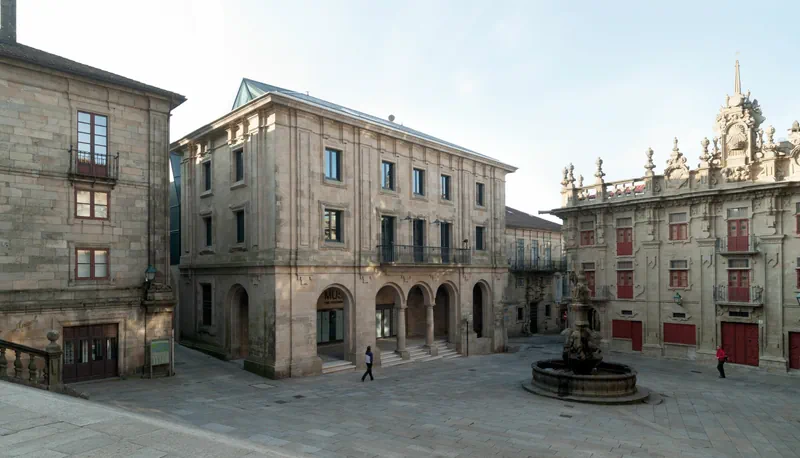
A city that today is the final destination of hundreds of thousands of pilgrims, and that has been so for centuries, almost had to open a museum about it. It was a private initiative, led by the archaeologist and writer Manuel Chamoso, that made it a reality in 1951. Although it was closed for years, it reopened in 1996 and in 2015 the Museum of Pilgrimages and Santiago moved to a new headquarters, in the Plaza del Obradoiro.
The Museum of Pilgrimages and Santiago is dedicated to the study of pilgrimages as a global phenomenon, and to the documentation and study of those that take place in Santiago in particular. On its three floors it has a permanent exhibition divided into three thematic areas: pilgrimage as a universal phenomenon, the Jacobean pilgrimage and the Camino de Santiago and the birth and evolution of the city of Santiago.
The museum is open from Tuesday to Friday from 9:30 a.m. to 8:30 p.m., on Saturdays from 11:00 a.m. to 7:30 p.m. and on Sundays and holidays from 10:15 a.m. to 2:45 p.m. (always with access up to 20 minutes before the closing time and evacuation of rooms 10 minutes before this). Its doors close every Monday of the year, on January 1 and 6, May 1 and December 24, 25 and 31.
3.- The Fonseca College
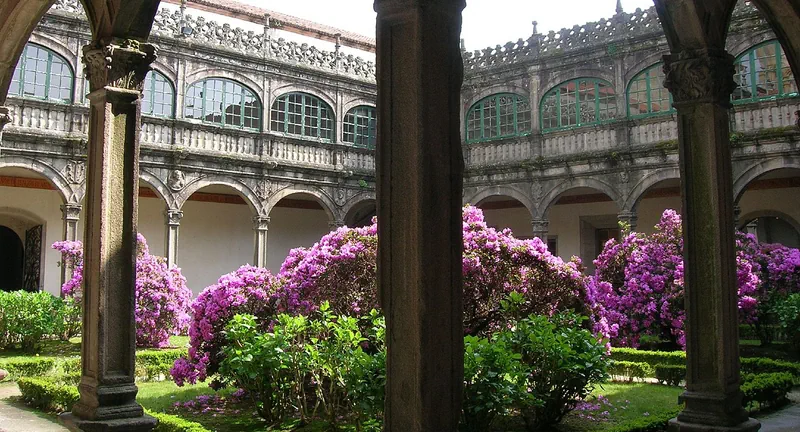
It can be said that this Renaissance building is the germ of the Santiago de Compostela University. Its construction is linked to the figure of Archbishop Alonso de Fonseca who ordered the adaptation of the family home where he was born to turn it into a teaching center. In the middle of the 16th century, classes began to be taught and the recently created Universidad Compostela was located there, under the patronage of the Fonseca family.
It is currently the headquarters of the General Library of the University of Santiago, has an exhibition hall and has other rooms and dependencies for various university uses. As part of the “Living University” program of the University of Santiago de Compostela, guided tours (€4) are organized at the Colegio de Fonseca to the Cloister and to the América de D. Gumersindo Busto Library, from Monday to Friday at 5:00 p.m. . You can make a reservation at the school itself, at the USC store, from 10:30 a.m. to 2:00 p.m. / 4:30 p.m. to 8:30 p.m. Saturdays: 11 a.m. to 2 p.m.
5.- Monasterio de San Martín Pinario
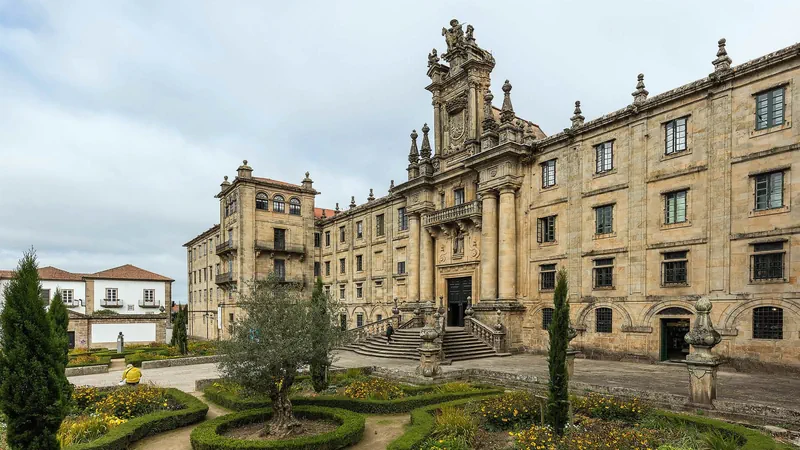
With an area of 20,000m2, it is the second largest religious building in Santiago de Compostela and its main façade, in the form of an altarpiece, extends for approximately 100m in length. Founded in the 10th century as a Benedictine Monastery, it was reformed in the 16th century so that Renaissance, Baroque and Neoclassical aspects coexist.
The door is framed by four Doric columns and includes the image of San Benito in its centre. The upper structure consists of the Spanish coat of arms and the equestrian image of San Martín de Tours sharing his cloak with a poor person who represents to Christ. This sculpture was added by Fernando de Casas in the XVII Century.
Inside, the Major Altarpiece in Baroque style by Casas y Novoa and Romay attracts the attention. Moreover, there are very valuable pieces such as collections of gold works, paintings, sacred objects, etc. You can visit the San Felipe Neri´ s oratory, the sacristy, the pharmacy, the relics chapel and the processional cloister. Nowadays, it is the Major Seminar, hall of residence and University headquarters.
The Monastery of San Martín Pinario is open every day of the week and from Thursday to Monday, they offer visits to the Church and Museum from 11:00 a.m. to 2:00 p.m. and in the afternoon from 4:00 p.m. to 7:00 p.m. Tuesday, from 11:00 a.m. to 2:00 p.m.). Guided visits to the whole of the Monastery are held on Fridays, Saturdays, Sundays and Mondays at 12:30 and 17:00. Reservations are made by phone, at 881 60 70 03, or by email at info@espacioculturalsmpinario.com.
6.- Santiago de Compostela Cathedral
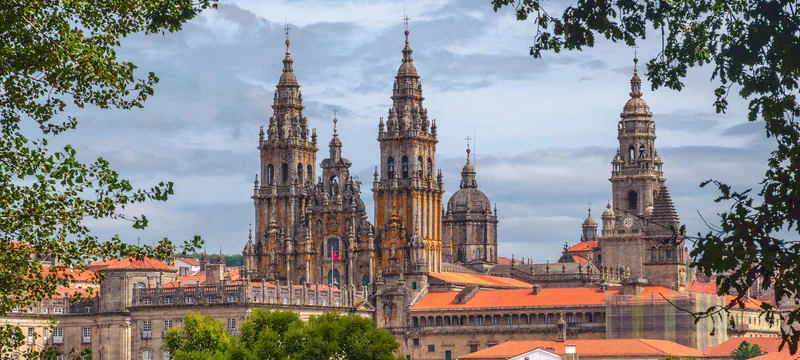
Santiago cathedral is the last stop on the pilgrims’ journey, and its monumental character makes it supremely worthy of this distinction. This is a key work in the Romanesque style in which numerous architectural styles converge.
Construction on the cathedral was begun in 1075 in the reign of Alfonso VI, and sponsored by Bishop Diego Peláez. The work took place under the direction of Master Esteban on the remains of old churches built in devotion to the saint. It was built with three naves and a floor plan in a Latin cross, and had an area of about 8300 m². Its countless extensions have added numerous architectural styles to the building (Romanesque, Gothic, Baroque, Plateresque and neoclassical).
The La Gloria portico is the main entrance, and was created by Master Mateo in 1188. It features 200 figures referring to the Apocalypse, and the figure of Saint James the apostle appearing to welcome the pilgrims, supported on a column rising from the mullion. The Obradoiro façade of the cathedral is the work of Fernando de Casas y Novoa, and is considered to be one of the supreme expressions of the Spanish Baroque. The main altar is also in the Baroque style, and the crypt of Saint James the apostle lies directly beneath.
7.- Mirador de Belvís
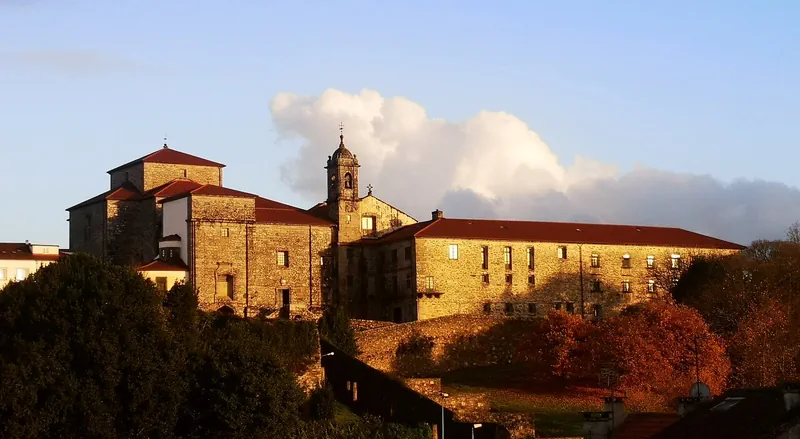
Leaving the historic center of Santiago, leaving behind the Mercado de Abastos and the Virxe da Cerca Hotel, we enter the Belvís neighborhood.
Going up first the ramp and then the stairs that take us to the Sanctuary of the Virgin of the Portal (Santuario da Virxe do Portal), we will arrive at the Belvís Viewpoint. From it, leaning on its old stone wall, we have a magnificent perspective towards that same historic center from which we came.
We can contemplate the tower of the Church of the Jesuits, those of the Cathedral of Santiago, the historic building of the Colegio de la Compañía de María (18th century), the building of the University of Santiago de Compostela that houses the Faculty of Geography and History or the Convent of the Descalzas Mercedarias, in addition to the white houses, with ocher roofs, of the people of Santiago. A must in the list of things to see in Santiago de Compostela.
8.- The Convent of Santa María de Belvís
Since we’ve been touring Santiago for quite some time, I think we deserve a treat, right? We will find it in the form of pasta made by the Dominican nuns of the Belvís Convent, just behind our backs.
The convent was founded in the 14th century, although in the 18th century it was rebuilt in the Baroque style, and today it houses a community of about 30 cloistered nuns. These are famous for their delicious desserts made to order (almonds, mantecados, Santiago cake) or ready for sale at the moment (tea cakes, wafer cutouts). Being a closing order, the sale system is with a lathe that allows the exchange of money – pasta without ever seeing the faces of the sisters.
The last reference I have found about the lathe hours to buy pasta at the Belvís Convent is from a few months ago. Then the lathe worked from Monday to Saturday, from 09:30 to 12:30 and from 16:15 to 18:00. On Sundays and holidays in the morning only until 12:00, and they close in the afternoon on Saturdays, Sundays and holidays.
9.- Belvis Park
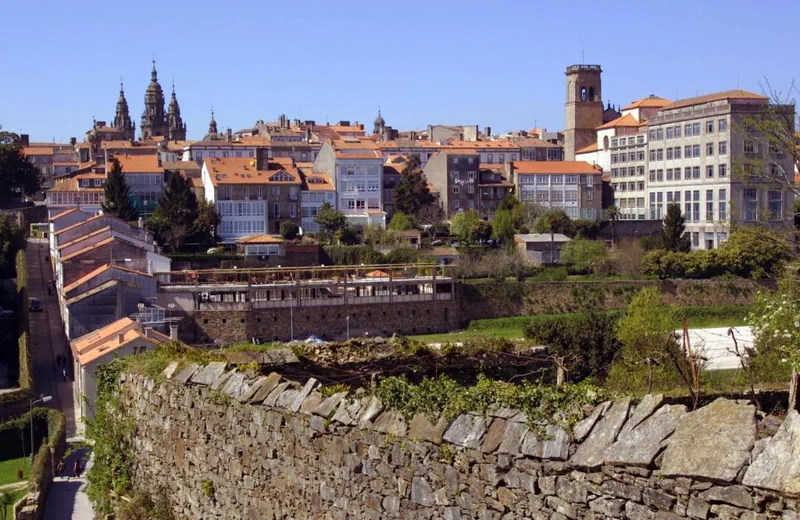
If after strolling through Santiago you are looking for a green, quiet corner, with little presence of tourists, then you have to stop by the Parque de Belvís. It has labyrinths, it has large areas of grass, many paths to go through it and here, where there is a small stream, several municipal gardens have been prepared. One of the nicest things to see in Santiago de Compostela.
10.- Mount of Joy (Monte do Gozo)
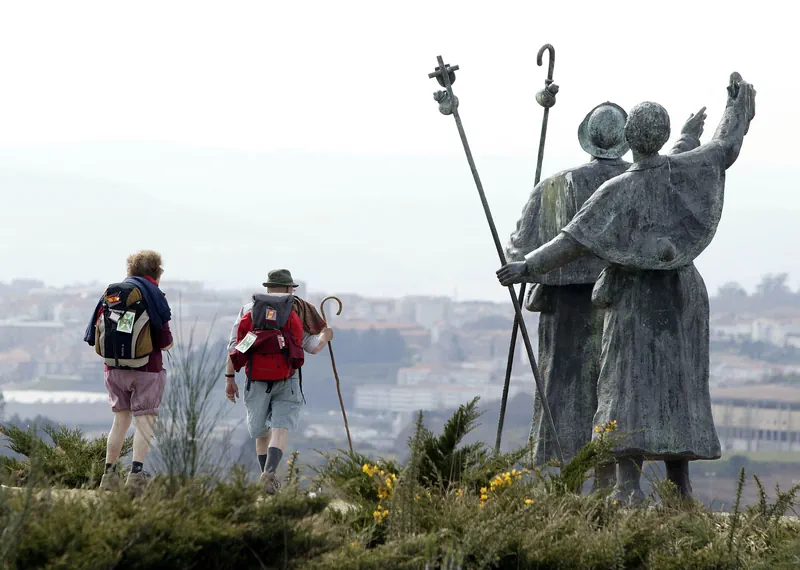
If you have not come here as a pilgrim, you can end your second day in the city with the most coveted landscape for them, the views of Santiago de Compostela from Monte do Gozo or Monte del Gozo.
Joy, contentment and satisfaction is what pilgrims feel when they reach the top of this hill (less than 400m) and finally see the towers of the Cathedral of Santiago. In fact, there stands a statue of two pilgrims in a jubilant attitude looking towards Santiago.
Depending on the time the pilgrims arrive, they can continue to Santiago de Compostela, Obradoiro Square is just over 4 km away, or recover their strength by spending the night at the Monte do Gozo Private Hostel, sleeping for the last time in a room with bunk beds or for the first time in one of its double rooms.
